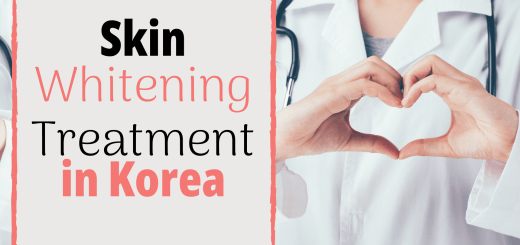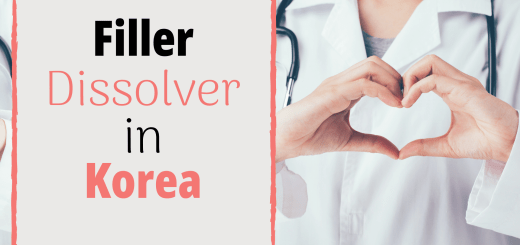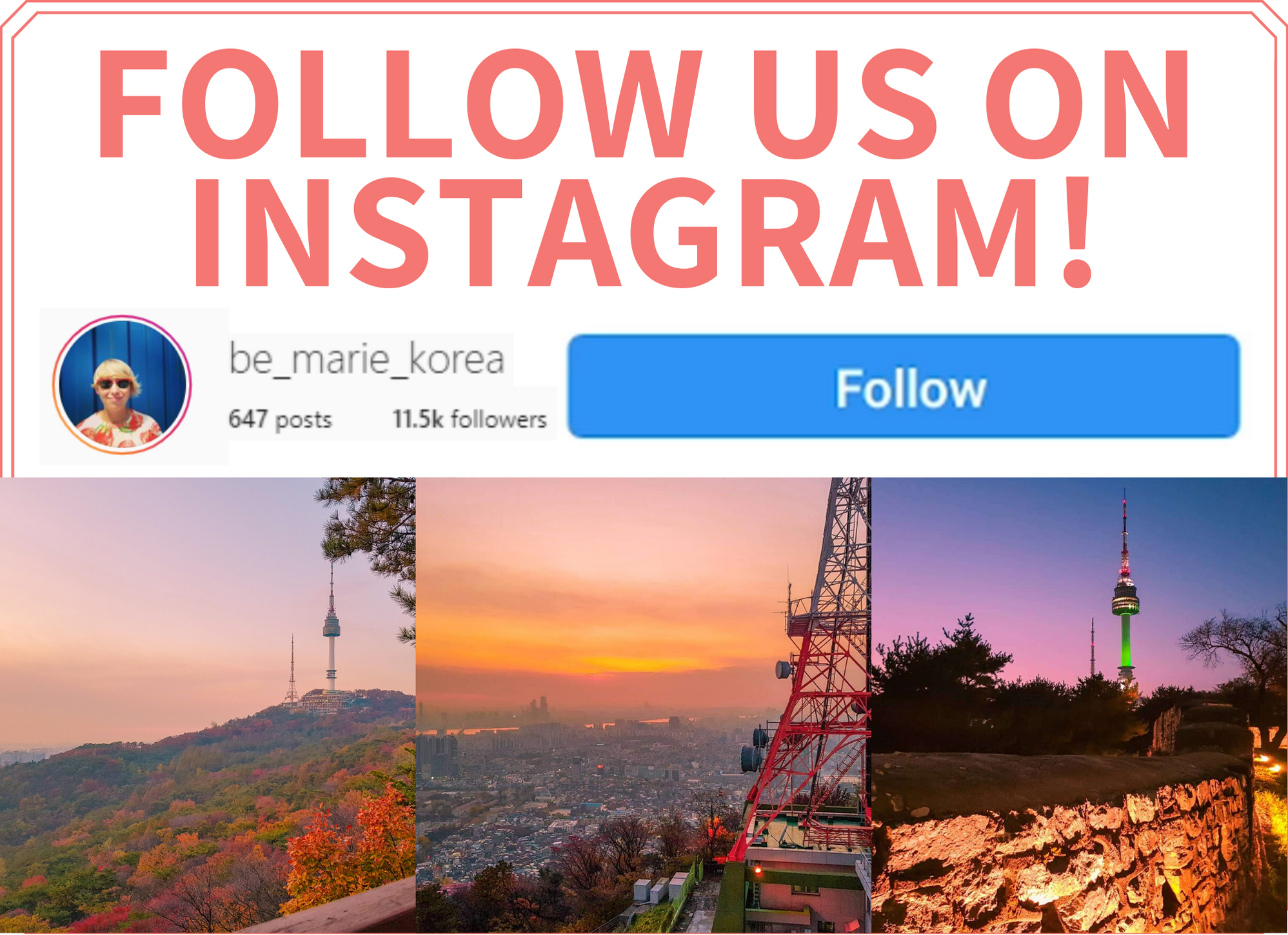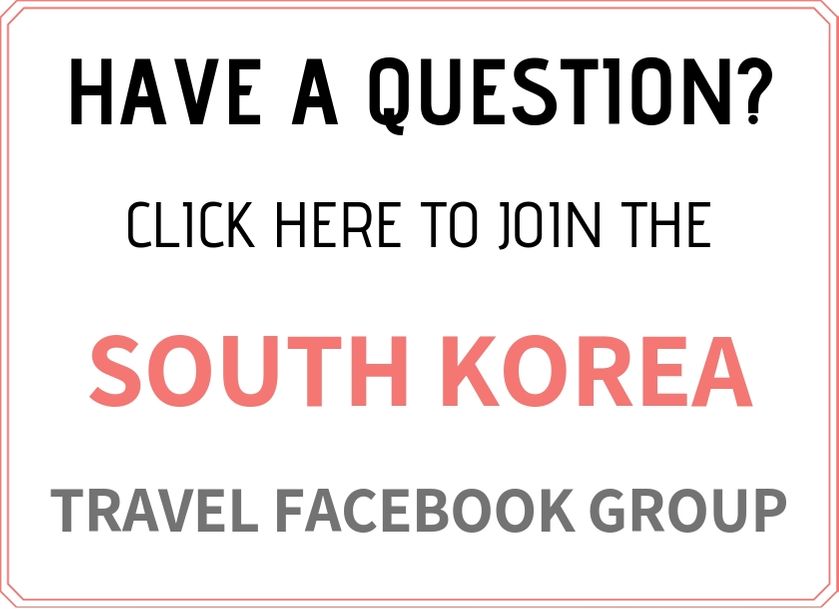Getting A Face Lift in Korea (Seoul) | Best Clinics, Costs, Procedure Types & More
South Korea has earned a reputation as a global leader in cosmetic and aesthetic surgery, attracting individuals from around the world seeking advanced beauty solutions. Among the most sought-after procedures is the Korean facelift, renowned for its precision, safety, and natural-looking results.
Korean Facelift Techniques
The term “Korean facelift” encompasses various modern techniques tailored to meet individual needs. Here are some of the most popular methods:
- Thread Lifting: Minutely invasive, this method uses dissolvable threads to lift and tighten sagging skin. It’s ideal for those looking for immediate results with minimal downtime.
- Endoscopic Facelift: Advanced technology involving small incisions and a camera to guide the procedure. This results in smaller scars and a faster recovery time.
- Mini-Facelift: Targeting specific areas such as the jawline and lower face, this option is less intensive and offers quicker recovery while still providing significant improvements.
Why Choose a Korean Facelift?
A Korean facelift stands out for several compelling reasons:
- Expert Surgeons: South Korea’s medical professionals are highly skilled, often trained both locally and internationally, ensuring a high standard of care.
- Cutting-Edge Technology: Korea’s clinics are equipped with the latest medical technology and adhere to stringent safety regulations.
- Natural Results: The focus is on enhancing natural beauty rather than creating a drastically altered appearance. This aligns well with the current global trend towards subtle and refined results.
Planning Your Trip for a Korean Facelift
When planning to travel to South Korea for a facelift, consider the following steps to ensure a smooth and successful experience:
- Research Clinic and Surgeon: Look for reputable clinics with positive reviews and certified surgeons specializing in facelift procedures.
- Consultation: Opt for an initial consultation, which can often be done online, to discuss your goals and develop a tailored plan.
- Travel and Accommodation: Book your flights and accommodation in advance. Many clinics offer packages that include accommodations and transportation.
- Post-Procedure Care: Plan to stay in South Korea for a period recommended by your surgeon to ensure proper follow-up care.
Contents
- Best Clinics for Face Lift in Korea
- Comparing Korean Facelift and Traditional Facelift.
- Ideal Candidates for Each Type of Facelift
- Step-by-Step Guide to Korean Facelift Procedure
- Recovery Process: What to Expect
- Preparation Tips for International Patients
- Potential Risks and Complications
- Exploring Seoul While Recovering from Surgery
- Frequently Asked Questions
Best Clinics for Face Lift in Korea
THEPLUS Plastic Surgery
THEPLUS Plastic Surgery, nestled in the bustling Garosu-gil area of Gangnam, Seoul, epitomizes the pinnacle of world-class plastic surgery. The clinic spans four floors specifically designed to accommodate a full spectrum of services, from initial consultation through surgery and post-operative skincare. Surgeons at THE PLUS are not only practitioners but also eminent medical researchers, regularly contributing to scholarly journals and books that echo their clinical prowess. Their participation in numerous domestic and international medical symposiums showcases their commitment to staying at the forefront of cosmetic surgery advancements. This dedication to excellence and personalized patient communication is at the core of their philosophy, ensuring a superior level of medical service.
- Expertise in Face Lift procedures: Surgeons with over a decade of experience and acknowledged contributions to medical research.
- Advanced Techniques: Offers traditional face lifts, thread lifts, HIFU laser lifting, and face fat grafting.
- Comprehensive Care: From consultation to post-operative care, ensuring patient safety and satisfaction.
- State-of-the-Art Facilities: Equipped with cutting-edge medical technology for safe and efficient procedures.
- Commitment to Innovation: Active participation in academic research and medical symposiums, staying updated with the latest advancements.
For those seeking to rejuvenate their appearance with a face lift, THE PLUS Plastic Surgery stands out as a beacon of excellence and innovation. The clinic’s highly skilled surgeons and comprehensive care ensure that each patient receives personalized and effective treatment tailored to their unique needs. Schedule your consultation today to experience transformative results at THE PLUS.
You can check out their website here: THEPLUS Plastic Surgery
She’s Heal Clinic
She’s Heal Clinic in Sinsa offers a comprehensive array of medical procedures under specialized categories, ensuring complete and personalized care for their patients. From women’s disease treatments to advanced screening programs, plastic surgeries, and male urology procedures, the clinic addresses a wide range of health concerns. Additionally, they provide innovative couple’s therapy and sexual health treatments, aiming to enhance intimacy and satisfaction in midlife relationships.
Why She’s Heal Clinic is the best for Face Lifting:
– Expert Surgeons: Highly skilled and experienced professionals perform the procedures.
– Advanced Technology: Utilization of the latest, most advanced equipment for optimal results.
– Custom-Tailored Treatments: Personalized treatment plans to meet individual patient needs.
– Non-Surgical Options: Availability of non-invasive face lifting techniques for minimal downtime.
– Comprehensive Care: Holistic approach ensuring all aspects of the patient’s well-being are considered.
Take the next step towards rejuvenation and overall well-being by choosing She’s Heal Clinic. With their dedicated team of medical professionals and state-of-the-art treatments, you can be confident you’re receiving top-notch care tailored specifically to your needs. Contact She’s Heal Clinic today to schedule your consultation and begin your journey to a healthier and more vibrant you.
You can check out their website here: She’s Heal Clinic
Made Young Plastic Surgery
Made Young Plastic Surgery, nestled in the heart of Seoul’s prestigious Gangnam district, epitomizes the pinnacle of rejuvenative and aesthetic excellence in the field of plastic surgery. With a firm commitment to safety as its guiding principle, Made Young is a beacon of hope for those seeking to turn back the clock on their appearance. The clinic stands out not just for its unwavering dedication to the highest standards of patient care and safety, but also for its innovative approach that marries traditional beauty ideals with cutting-edge techniques.
- Highly Experienced Surgeons: Led by an elite team of doctors specializing in facial rejuvenation.
- Comprehensive Approach: Extensive suite of procedures including face lift, double chin lift, neck lift, forehead lift, and sub-brow lift.
- State-of-the-Art Facility: Equipped with the latest medical technology to ensure optimal results and safety.
- Patient-Centered Care: Individualized treatment plans tailored to meet unique aesthetic goals.
- Commitment to Safety: Real-time monitoring, no proxy surgeries, and advanced safety equipment.
Experience the transformative journey to a more youthful you at Made Young Plastic Surgery Clinic. Their meticulous attention to detail, commitment to safety, and passion for individualized care ensure that every patient walks out with renewed confidence and satisfaction. Book your consultation today and discover the rejuvenative expertise that awaits you at Made Young.
You can check out their website here: Made Young Plastic Surgery
Comparing Korean Facelift and Traditional Facelift.
Facelifts, technically known as rhytidectomy, are popular cosmetic procedures aimed at reducing the visible signs of aging. Both Korean facelifts and traditional facelifts boast unique techniques and results.
Differences in Techniques
Traditional Facelift:
– Traditional facelifts focus on removing sagging skin and tightening underlying facial muscles.
– Typically performed under general anesthesia.
– Invasive procedure requiring significant recovery time.
Korean Facelift:
– Emphasizes non-surgical or minimally invasive methods.
– Often employs thread lifting using dissolvable threads like PDO (Polydioxanone) threads.
– Carried out under local anesthesia with minimal downtime.
Key Features
Traditional Facelift:
– Duration: Surgery lasts 2-4 hours.
– Recovery: Several weeks required.
– Results: Provides dramatic and long-lasting improvement.
– Risks: Higher risk of complications such as scarring and infection.
Korean Facelift:
– Duration: Procedure typically takes 30 minutes to 1 hour.
– Recovery: Little to no downtime; patients can usually resume daily activities almost immediately.
– Results: Subtle and natural enhancements that can last up to 2 years.
– Risks: Fewer complications, with minor side effects like swelling and bruising.
Advantages of a Korean Facelift
- Minimal Invasiveness: Uses fine threads to lift and tighten skin without large incisions.
- Quick Recovery: Patients can see immediate results and get back to their daily routine faster.
- Natural Appearance: Focus on subtle improvements rather than drastic changes.
- Safety: Reduced risk of complications compared to traditional methods.
Ideal Candidates
Traditional Facelift:
– Individuals with significant sagging skin and deep wrinkles.
– People seeking long-lasting and extensive facial rejuvenation.
Korean Facelift:
– Younger individuals in their late 30s to 50s experiencing early signs of aging.
– Patients preferring a non-surgical approach with mild to moderate skin laxity.
Cost Comparison
- Traditional facelifts tend to be more expensive due to the invasive nature and longer recovery process.
- Korean facelifts are generally more affordable, making them accessible to a broader audience.
Planning Your Visit
If you’re considering a facelift while traveling to Korea, it’s important to:
- Research Clinics: Look for reputable clinics with certified professionals.
- Consultation: Schedule a consultation to discuss goals and options.
- Post-Procedure Care: Plan for any necessary recovery time to ensure best results.
Considering Korea’s advanced cosmetic technology and innovative techniques, opting for a Korean facelift could be an excellent choice for those seeking subtle and natural enhancements.
Ideal Candidates for Each Type of Facelift
Considering a facelift in Korea? You’re not alone. South Korea has become a leading destination for cosmetic surgery, offering advanced techniques, experienced surgeons, and state-of-the-art facilities. Understanding who the ideal candidates are for each type of facelift can help you make an informed decision.
Traditional Facelift
A traditional facelift, also known as a rhytidectomy, is designed to address extensive signs of aging.
Ideal Candidates:
– Individuals in their 40s to 60s
– Those with moderate to severe facial sagging
– People with deep creases below the eyelids or along the nose extending to the corners of the mouth
– Those experiencing significant loss of skin elasticity
This procedure focuses on lifting and tightening the deeper layers of the face and removing excess skin. It is suited for those looking for long-lasting and dramatic results.
Mini Facelift
The mini facelift is a less invasive alternative, often referred to as the “weekend lift.”
Ideal Candidates:
– Individuals in their late 30s to early 50s
– Those with mild to moderate sagging
– People looking to address early signs of aging, like jowls and loose neck skin
– Candidates interested in shorter recovery times and less scarring
The mini facelift involves smaller incisions and targets specific areas, making it popular for those seeking subtle improvements.
Mid-Facelift
A mid-facelift focuses specifically on the middle part of the face, such as the cheeks and under-eye area.
Ideal Candidates:
– People in their 30s to 50s
– Those with sagging cheeks or deep nasolabial folds
– Individuals looking to enhance cheek volume and achieve a youthful contour
– Those with minimal excess skin but noticeable volume loss in the mid-face
This approach effectively lifts the cheek area and provides a refreshed appearance.
Thread Lift
Thread lifts provide a quick, non-surgical option with immediate yet subtle results.
Ideal Candidates:
– Individuals in their 30s to 50s
– Those with mild facial sagging
– People looking for a non-surgical solution with minimal downtime
– Candidates open to temporary, rather than permanent, results
Threads are inserted under the skin to lift and tighten the face, stimulating collagen production for a natural rejuvenation.
Choosing the Right Facelift: Key Considerations
- Age and skin condition: Aging signs and skin elasticity can influence which type of facelift is most suitable.
- Desired results: Whether you’re looking for dramatic changes or subtle improvements, your goals will guide the choice of procedure.
- Downtime and recovery: Consider how much time you can afford to spend on recovery. Less invasive procedures like the mini facelift and thread lift generally require shorter downtime.
- Budget: Each type of facelift varies in cost. Factor in your budget when making a decision.
Step-by-Step Guide to Korean Facelift Procedure
Korea has become a hub for cosmetic surgery, drawing people from all over the world seeking youthful and rejuvenated appearances. Among various cosmetic procedures, the Korean facelift stands out for its advanced techniques, exceptional results, and comprehensive care. This guide provides a detailed look at each stage of the Korean facelift procedure.
Initial Consultation
Before undergoing a facelift, it’s crucial to have a thorough consultation with a specialist. During this meeting, the surgeon will:
- Assess facial structure and skin condition
- Discuss the patient’s goals and expectations
- Explain the different types of facelift procedures available
- Outline potential risks and recovery time
- Develop a customized surgical plan
Pre-Operative Preparations
After the consultation, patients are required to undergo several pre-operative steps, including:
- Medical Evaluation: Comprehensive medical tests and evaluations to ensure you’re fit for surgery.
- Medication Review: Avoidance of certain medications and supplements that can interfere with surgery or recovery.
- Skin Care Regimen: Adoption of a pre-surgery skincare routine to prime the skin.
Surgical Procedure
The Korean facelift itself involves several meticulous steps:
- Anesthesia: Either general anesthesia or sedation and local anesthesia are administered for patient comfort.
- Incision: The surgeon makes precise incisions, typically placed along the hairline and around the ears to minimize visible scarring.
- Tissue Repositioning: The underlying facial tissues and muscles are carefully repositioned to achieve a youthful appearance.
- Excess Skin Removal: Any excess skin is trimmed away to ensure smooth, natural results.
- Closure: Incisions are closed with sutures or skin adhesives, paying attention to minimize scars.
Post-Operative Care
Successful recovery depends on diligent post-operative care:
- Monitoring: Regular follow-up visits to the clinic to monitor healing.
- Wound Care: Instructions for keeping the incision areas clean and protected.
- Pain Management: Medications prescribed to manage pain and reduce swelling.
- Activity Restrictions: Guidance on limiting physical activities to avoid stress on the facial area.
Recovery Timeline
The recovery timeline can vary, but generally includes:
- First Week: Expect swelling, bruising, and discomfort. Most patients can resume light activities.
- Second Week: Swelling and bruising start to subside. Patients often feel more comfortable socializing.
- First Month: Significant reduction in swelling. Continuous improvement in skin tightness and overall facial contour.
- Three to Six Months: Full recovery with final results becoming evident.
Recovery Process: What to Expect
Initial Recovery (First Week)
- Swelling and Bruising: The first few days post-surgery are often the most uncomfortable, with noticeable swelling and bruising around the face.
- Pain Management: Pain relief medication will be prescribed to help you manage any discomfort.
- Bandages and Drains: You may have bandages and possibly small drains to remove excess fluid.
Follow-Up Visits
- First Visit: Typically scheduled 2-3 days post-surgery to remove drains and check the initial healing process.
- Second Visit: Usually occurs a week after the surgery. Stitches may be removed during this visit.
Ongoing Recovery (Second Week Onwards)
- Reduced Swelling and Discomfort: By the end of the first week, swelling and discomfort should start to decrease.
- Light Activities: You can begin to resume light activities, but strenuous activities should still be avoided.
Long-Term Recovery (1 Month and Beyond)
- Full Healing: It generally takes about a month for the majority of the swelling to subside and several months for the full results to be visible.
- Scarring: Any scarring will gradually fade over time and should become less noticeable.
Preparation Tips for International Patients
For those traveling to Korea specifically for a face lift, preparation is key to ensuring a smooth experience:
Research and Consultation
- Online Reviews: Read reviews and testimonials from previous patients.
- Video Consultations: Many clinics offer video consultations to discuss your goals and expectations before you arrive.
Travel Arrangements
- Flights and Accommodation: Book your flights and accommodation well in advance. Many clinics offer packages that include hotel stays.
- Documentation: Ensure you have all necessary documentation, including medical records and identification.
Post-Surgery Care
- Aftercare Plan: Have a detailed aftercare plan in place. This may include arranging for someone to help you in the initial recovery days.
- Local Support: Consider staying in Korea for at least a week post-surgery to attend follow-up appointments and ensure everything is progressing as expected.
Potential Risks and Complications
Considering a facelift in Korea can be an exciting prospect, especially given the country’s reputation for advanced medical procedures and aesthetic innovations. However, like any surgical procedure, it’s crucial to understand the potential risks and complications. Being well-informed ensures you can make a balanced decision and set realistic expectations for your recovery and results.
General Surgical Risks
Undergoing any surgical procedure comes with a general set of risks. These include:
– Infection: Despite stringent sterilization protocols, there’s always a small possibility of infection. This can range from mild to severe and may require antibiotic treatment or additional procedures.
– Anesthesia Complications: Reactions to anesthesia can occur, although they are rare. These can include respiratory issues, allergic reactions, or adverse responses that may prolong recovery.
– Hematoma: This is a collection of blood under the skin that may cause swelling and pressure. In some cases, it might need to be surgically drained.
Specific Risks Associated with Facelifts
Facelifts come with their own set of specific risks:
– Scarring: While Korean surgeons are known for their finesse and precision, scarring is an inevitable result of any incision. Surgeons take care to place incisions in less visible areas, but some minor scarring is always a possibility.
– Nerve Damage: Facial nerves may be affected during surgery, potentially resulting in numbness or temporary weakness. In rare cases, nerve damage can be permanent.
– Skin Irregularities: After the procedure, some patients may experience skin irregularities, such as puckering or changes in skin color. These usually improve over time but may require additional interventions.
Post-Operative Complications
Several complications can arise in the post-operative period:
– Swelling and Bruising: Swelling and bruising are common and typically resolve within a few weeks. However, in some cases, they may persist longer and require additional care.
– Poor Wound Healing: Factors like diabetes, smoking, or poor overall health can contribute to slower or problematic wound healing.
– Suture Issues: Sutures used to close incisions may cause irritation or fail to hold, necessitating further surgical attention.
Factors that Influence Risks
Certain factors can increase the likelihood of complications, including:
– Patient Health: Pre-existing medical conditions like heart disease, high blood pressure, or autoimmune disorders can heighten surgical risks.
– Surgeon Experience: The skill and experience of your surgeon play a crucial role in minimizing risks. Opting for a board-certified and highly experienced surgeon is essential.
– Post-Operative Care: Following your surgeon’s post-operative care guidelines diligently can significantly reduce the risk of complications.
Exploring Seoul While Recovering from Surgery
Undergoing a facelift in Korea has become increasingly popular, thanks to the country’s advanced medical technology and skilled surgeons. South Korea is renowned for its cosmetic surgery industry, which attracts thousands of international visitors each year. Combining medical tourism with travel experiences can be a perfect way to make the most of your visit. Here’s a comprehensive guide about exploring Seoul while recovering from your surgery.
Quick Recovery Tips
Before diving into the highlights of Seoul, it’s important to take care of your healing process. Here are some essential tips for a smooth recovery:
- Follow Post-Operative Care Instructions: Your surgeon will provide specific guidelines regarding medication, bandages, and follow-up appointments.
- Stay Hydrated: Drink plenty of water to help your body heal and reduce swelling.
- Limit Physical Activity: Avoid strenuous activities, but light walking can promote blood circulation and speed up recovery.
- Use Cold Compresses: Applying cold compresses to affected areas can help reduce swelling and discomfort.
- Avoid Direct Sunlight: Protect your skin from UV rays to prevent scarring and pigmentation issues.
Discover Seoul’s Hidden Gems
While you may need to avoid physically demanding activities, there are plenty of low-impact ways to enjoy Seoul’s unique charm and culture during your recovery.
Palaces and Historical Sites
- Gyeongbokgung Palace: Explore the grandeur of Seoul’s largest palace. It offers leisurely strolls through tranquil gardens and reflective ponds.
- Changdeokgung Palace: Known for its beautiful Secret Garden, this UNESCO World Heritage site is ideal for a peaceful walk.
Calm Cultural Experiences
- Bukchon Hanok Village: Wander through narrow lanes lined with traditional Korean homes. It’s a serene spot with minimal physical exertion required.
- Insadong Street: Immerse yourself in Korean culture by visiting art galleries, traditional tea houses, and antique shops.
Relaxing Cafés and Tea Houses
- Art Monster Itaewon: Take a break in this unique café that blends art with a relaxing atmosphere.
- Osulloc Tea House: Savor traditional Korean teas and desserts in a calming environment.
Enjoying Korean Cuisine
Even though certain food items might be off-limits post-surgery, Seoul’s diverse culinary scene offers plenty of options that are both delicious and gentle on your recovery.
- Samgyetang (Ginseng Chicken Soup): A nutritious and comforting dish perfect for boosting your recovery.
- Soft Tofu Soup (Sundubu Jjigae): A protein-rich option that is easy to eat and gentle on the digestive system.
- Bibimbap: A balanced meal with a variety of vegetables, rice, and a protein of your choice, ensuring you get all your nutrients.
Medical Facilities and Follow-Ups
- Access to Top Doctors: Seoul is home to numerous world-class medical facilities. Make sure to schedule your follow-up appointments with your surgeon to monitor your progress.
- Convenient Services: Many clinics offer concierge services to help international patients with transport and accommodation.
Rest and Relaxation
After exploring, it’s crucial to prioritize rest to aid your recovery process. Here are some places ideal for unwinding:
- Korean Spas (Jjimjilbang): Facilities like Dragon Hill Spa offer relaxation services including massages and warm baths. (Always consult your doctor before visiting.)
- Namsan Seoul Tower: Enjoy panoramic views of the city from the comfort of a cable car or the observation deck.
Frequently Asked Questions
Why is South Korea a popular destination for face lift surgery?
South Korea is renowned for its advanced cosmetic surgery techniques and state-of-the-art medical facilities. The country boasts highly qualified surgeons with extensive experience, making it a preferred destination for those seeking high-quality face lift procedures.
What is the recovery time for a face lift in Korea?
The initial recovery period typically lasts about 1 to 2 weeks, during which swelling and bruising gradually subside. Full recovery, including the final results, usually takes around 3 to 6 months, though this varies from person to person.
How much does a face lift cost in Korea?
The cost of a face lift in Korea can range from $5,000 to $15,000, depending on factors such as the surgeon’s expertise, the complexity of the procedure, and the clinic’s location. Many clinics offer package deals that include consultations, surgery, and follow-up care.





